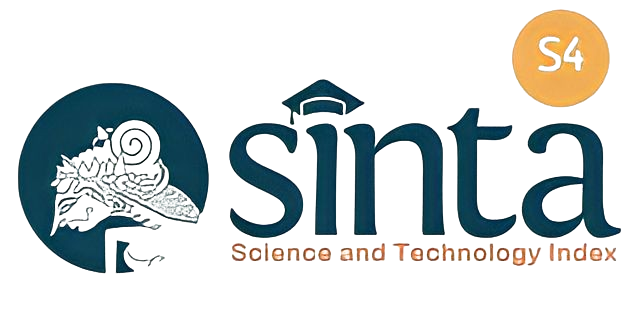Determinan Indeks Pembangunan Manusia Kawasan Timur Indonesia (KTI)
DOI:
https://doi.org/10.14421/jmes.2024.031-04Keywords:
Education, Economic Growth, Government Expenditure, Health, Labor Force, Human Development IndexAbstract
This paper examines how government expenditure affects the education and health sectors, economic growth, and labor force on HDI in 13 provinces in the Eastern Region of Indonesia (KTI) for 2015-2022. Using panel data regression, this paper studies whether the human development index correlates to government expenditure on the education and health sectors, economic growth, and the labor force in the province of KTI. The study's findings revealed that all exogenous variables in this paper were important factors that influenced human development in KTI during the 8-year observation period. This shows that the government has succeeded in improving the welfare of its people, which is reflected in the value of HDI in each KTI province which has increased in recent years. However, the government still has to continue striving for human development to improve its people's quality of life and standard of living.
Downloads
 Abstract viewed: 535 times
|
Abstract viewed: 535 times
|
 PDF downloaded = 695 times
PDF downloaded = 695 times
References
Abdeldayem, M. M., Aldulaimi, S., & Kharabsheh, R. (2022). Development of Human Capital Resources to Increasing Economic Growth and Innovation in the GCC Countries. International Journal of Green Management and Business Studies, 1(11), 62–79.
BPS, B. P. S. (2023a). Booklet Sakernas Agustus 2023. 6(2).
BPS, B. P. S. (2023b). Indeks Pembangunan Manusia Menurut Provinsi. Badan Pusat Statistik.
Choudhry, M. T., & Elhorst, P. (2018). Female labour force participation and economic development. International Journal of Manpower, 39(7), 896–912. https://doi.org/https://doi.org/10.1108/IJM-03-2017-0045
Fauziana, H., & Ratnasari, R. T. (2023). The Effect of Health, Education, and Labor Force with Urban Population as Moderating Variables on Human Development Index in Oic Member Countries. Jurnal Ekonomi Syariah Teori Dan Terapan, 10(1), 82–95. https://doi.org/10.20473/vol10iss20231pp82-95
Grossman, M. (2000). The Human Capital Model. In Handbook of Health Economics (Vol. 1, pp. 348–405). Elsevier Science.
Hasbi, M. Z. N., Munajat, M., & Qoyum, A. (2023). Human Development Index from the Islamic Perspective: Roles of Taxation, Zakah, and Health and Education Expenditures`. Jurnal Ekonomi Malaysia, 57(1), 99–112. https://doi.org/https://dx.doi.org/10.17576/JEM-2023-5701-08
Hasibuan, S. A., & Syahbudi, M. (2022). Pengaruh Pengeluaran Pemerintah Bidang Pendidikan Terhadap Indeks Pembangunan Manusia. Jurnal Masharif Al-Syariah: Jurnal Ekonomi Dan Perbankan Syariah, 7(30), 1158–1166. https://doi.org/http://dx.doi.org/10.30651/jms.v7i4.13218
Jajang, A., Mahri, W., Cupian, Al Arif, M. N. R., Arundina, T., Widiastuti, T., Mubarok, F., Fajri, M., Azizon, & Nurasyiah, A. (2021). Ekonomi Pembangunan Islam. Departemen Ekonomi dan Keuangan Syariah Bank Indonesia.
Jin, H., & Jakovljevic, M. (2023). Fiscal Decentralization and the Human Development Index: A Cross-Border Empirical Study. Sustainability (Switzerland), 15(11), 1–16. https://doi.org/10.3390/su15118784
Khairina, N., & Wijaya, A. (2023). The Determinant of Human Development in the Eastern Part of Indonesia. Jurnal Ilmu Ekonomi, 12(1), 83–96. https://doi.org/https://doi.org/10.15408/sjie.v12i1.29496.
Lange, G.-M., Wodon, Q., & Carey, K. (2018). The Changing Wealth of Nations 2018: Building a Sustainable Future. In The Changing Wealth of Nations 2018: Building a Sustainable Future. World Bank. https://doi.org/10.1596/978-1-4648-1046-6
Linhartová, V. (2020). The Effect of Government Expenditure on Human Capital in the Czech Republic. SciPap (Scientific Papers), 28(2), 1056. https://doi.org/10.46585/sp28021056
Mankiw, N. G. (2007). Makroekonomi Edisi Keenam. Erlangga.
Napitupulu, R. B., Simanjuntak, T. J., Hutabarat, L., Damanik, H., Harianja, H., Sirait, R. T. M., & Tobing, C. E. R. L. (2021). Penelitian Bisnis, Teknik dan Analisis dengan SPSS - STATA - EViews (1st ed.). Madenatera.
Ningrum, J. W., Khairunnisa, A. H., & Huda, N. (2020). Pengaruh Kemiskinan , Tingkat Pengangguran , Pertumbuhan Ekonomi dan Pengeluaran Pemerintah Terhadap Indeks Pembangunan Manusia ( IPM ) di Indonesia Tahun 2014-2018 dalam Perspektif Islam. Jurnal Ilmiah Ekonomi Islam, 6(02), 212–222. https://doi.org/http://dx.doi.org/10.29040/jiei.v6i2.1034 1.
Nurlina, Ridha, A., & Asnidar. (2023). Determinants of Human Development Index in Indonesia Period 1990-2021. Jurnal Samudra Ekonomi & Bisnis, 14(2), 239–250. https://doi.org/10.33059/jseb.v14i2.7287.Abstrak
Nurvita, D., Rohima, S., Bashir, A., & Mardalena. (2022). The Role of Public Spending on Education , Health , and Economic Growth toward Human Development Index in the Local Economy. Sriwajaya International Journal of Dynamic Economics and Business (SIJDEB), 6(2), 197–210. https://doi.org/https://doi.org/10.29259/sijdeb.v6i2.197-210
Raynaldo, R. (2022). Human Development Index And Employment Provision In Medan City. International Journal of Science, Technology & Management, 3(6), 1688–1694. https://doi.org/10.46729/ijstm.v3i6.644
Romer, P. M. (1986). Increasing Returns and Long-Run Growth. The Journal of Political Economy, 94(5), 1002–1037.
Schultz, T. W. (1961). Investment in Human Capital. The American Economic Review, 51(1), 1–17.
Shihab, M. Q. (2003). Tafsir Al Misbah: Pesan, Kesan dan Keserasian Al-Qur’an Volume 14. Lentera Hati.
Siregar, R., & Majid, M. S. A. (2023). Pembangunan Ekonomi dalam Perspektif Islam. Jurnal Ekonomi Dan Manajemen Teknologi (EMT), 7(1), 71–82. https://doi.org/https://doi.org/10.35870/emt.v7i1.722
Todaro, M. P., & Smith, S. C. (2015). Economic Development (12th Editi). Pearson.
Wahyudi, H., Husain, F. R., & Palupi, W. A. (2023). The Impact of Control of Corruption , Human Development Index , and Macroeconomics on Economic Growth Rates in Low-Middle Income Countries. WSEAS Transactiton on Business and Economics, 20, 1030–1041. https://doi.org/10.37394/23207.2023.20.94
Widarjono, A. (2018). Ekonomitrika Pengantar dan Aplikasinya Disertai Panduan Eviews. UPP STIM YKPN.
Wijaya, A., Tasenţe, T., Darma, D. C., & Kasuma, J. (2021). Labor Force and Economic Growth Based on Demografic Pressure, Happiness, and Human Development: Empirical From Romania. Journal of Eastern European and Central Asian Research, 8(1), 40–50. https://doi.org/http://dx.doi.org/10.15549/jeecar.v8i1.571
World Bank. (2021). The Human Capital Index 2020 Update: Human Capital in the Time of COVID-19. In World Bank. World Bank.
Zhang, J., & Danish. (2019). The dynamic linkage between information and communication technology, human development index, and economic growth: evidence from Asian economies. Environmental Science and Pollution Research, 26(26), 26982–26990. https://doi.org/10.1007/s11356-019-05926-0











